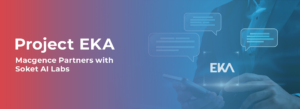Exploring Chatbot Datasets for AI/ML-Powered Conversations
Chatbot datasets for AI/ML are the foundation for creating intelligent conversational bots in the fields of artificial intelligence and machine learning. These datasets, which include a wide range of conversations and answers, serve as the foundation for chatbots’ understanding of and ability to communicate with people. We’ll go into the complex world of chatbot datasets for AI/ML in this post, examining their makeup, importance, and influence on the creation of conversational interfaces powered by artificial intelligence.
This article will discuss how chatbot datasets for AI/ML play a crucial part in influencing conversational agents’ skills, such as their capacity to comprehend subtleties in real language and respond appropriately given the context.
Understanding Chatbot datasets for AI/ML
Chatbot datasets for AI/ML are essentially complex assemblages of exchanges and answers. They play a key role in shaping the operation of the chatbot by acting as a dynamic knowledge source. These datasets assess how well a chatbot understands user input and responds to it.
These data compilations range in complexity from simple question-answer pairs to elaborate conversation frameworks that mimic human interactions in the actual world. A variety of sources, including social media engagements, customer service encounters, and even scripted language from films or novels, might provide the data.
Specifically, NLP chatbot datasets are essential for creating linguistically proficient chatbots. These databases provide chatbots with a deep comprehension of human language, enabling them to interpret sentiment, context, semantics, and many other subtleties of our complex language.
Delving into Chatbot datasets for AI/ML training data
Chatbot learning data is the fuel that drives a chatbot’s learning process. It consists of datasets that are used to provide precise and contextually aware replies to user inputs by the chatbot. The caliber and variety of a chatbot’s training set have a direct bearing on how well-trained it is. A chatbot that is better equipped to handle a wide range of customer inquiries is implied by training data that is more rich and diversified.
By applying machine learning (ML), chatbots are trained and retrained in an endless cycle of learning, adapting, and improving. In this procedure, training data is fed to chatbots, they are allowed to learn and make mistakes, and their algorithms are then adjusted based on these learning experiences to improve their performance over time.
The combination of chatbots and machine learning

The engine that drives chatbot development and opens up new cognitive domains for them to operate in is machine learning. With machine learning (ML), chatbots may learn from their previous encounters and gradually improve their replies, which can greatly improve the user experience.
Dialog datasets for chatbots play a key role in the progress of ML-driven chatbots. These datasets, which include actual conversations, help the chatbot understand the nuances of human language, which helps it produce more natural, contextually appropriate replies.
Training Chatbots for Chatbot datasets for AI/ML: a Practical Perspective
A chatbot must be carefully and rigorously trained. It entails providing the bot with particular training data that covers a range of situations and reactions. After that, the bot is told to examine various chatbot datasets, take notes, and apply what it has learned to efficiently communicate with users.
It is important to emphasize the significance of high-quality training data. High-quality, varied training data helps build a chatbot that can accurately and efficiently comprehend and reply to a wide range of user inquiries, greatly improving the user experience in general.
Chatbot datasets for AI/ML Models:
For chatbot developers, machine learning datasets are a gold mine as they provide the vital training data that drives a chatbot’s learning process. These datasets are essential for teaching chatbots how to comprehend and react to natural language.
Chatbots are trained using ML datasets such as social media discussions, customer service records, and even movie or book transcripts. These diverse datasets help chatbots learn different language patterns and replies, which improves their ability to have conversations.
The following five categories of datasets are crucial for training chatbots:

1. Logs of Customer Service
Client inquiries and representative replies are included in this extensive data collection, which gives chatbots real-world context for handling typical client problems.
2. Talks about Social Media
The colloquialisms and casual language used in social media conversations significantly teach chatbots. Moreover, this type of information helps chatbots comprehend emojis and colloquial expressions, which are prevalent in everyday conversations.
3. Transcripts of books or movies
A wide range of conversational tones and styles, ranging from professional to informal and even archaic language types, are available in these chatbot datasets. Consequently, they help chatbots comprehend the richness and diversity of human language.
4. Online shopping Relationships
This type of dataset includes customer interactions from online shopping platforms, such as product inquiries, grievances, and reviews. It prepares chatbots to manage a variety of
5. Patient Information for Healthcare
Anonymized patient-doctor discussions could be a valuable tool for training medical chatbots in the age of digital health services, thereby helping them to comprehend and competently respond to health-related inquiries.
Why Choose Macgence?
Macgence excels as a leader in innovation. By leveraging various chatbot datasets for AI/ML, including customer support, social media, and scripted material, Macgence ensures its chatbots are intelligent enough to understand human language and behavior. Moreover, Macgence’s patented machine learning algorithms continuously learn and adjust, allowing the chatbots to improve their replies instantly. As a result, this approach produces clever, captivating interactions that go beyond simple automation, ultimately offering consumers a smooth, natural experience. With Macgence, developers can not only fully realize the promise of conversational interfaces driven by AI and ML but also expertly guide the future direction of conversational AI.
Conclusion:
As we approach to the end of our investigation of chatbot datasets for AI/ML-powered dialogues, it is clear that these knowledge stores serve as the foundation for intelligent conversational interfaces. Chatbot datasets for AI/ML are essential to the development of AI-driven chatbots because of their influence on conversational skill refinement as well as their function in molding chatbots’ comprehension of human language.
These databases supply chatbots with contextual awareness from a variety of sources, such as scripted language and social media interactions, which enable them to successfully engage people. Furthermore, by using machine learning, chatbots are better able to adjust and grow over time, producing replies that are more natural and appropriate for the given context.
FAQs:
Ans: – Chatbot datasets for AI/ML not only shape chatbots’ comprehension of human language and behavior but also serve as the foundation for intelligent conversational interfaces. Consequently, they enhance the overall user experience and interaction quality.
Ans: – A range of sources, such as social media exchanges, customer support interactions, and scripted language from movies or books, creators use to develop chatbot databases.
Ans: – By utilizing these datasets, chatbots can not only gain contextual awareness but also comprehend sentiment, context, semantics, and other nuanced aspects of human language. Consequently, this improves their ability to engage in more natural and meaningful conversations.
You Might Like
February 28, 2025
Project EKA – Driving the Future of AI in India
Spread the loveArtificial Intelligence (AI) has long been heralded as the driving force behind global technological revolutions. But what happens when AI isn’t tailored to the needs of its diverse users? Project EKA is answering that question in India. This groundbreaking initiative aims to redefine the AI landscape, bridging the gap between India’s cultural, linguistic, […]
March 7, 2025
What is Data Annotation? And How Can It Help Build Better AI?
Spread the loveIntroduction In the world of digitalised artificial intelligence (AI) and machine learning (ML), data is the core base of innovation. However, raw data alone is not sufficient to train accurate AI models. That’s why data annotation comes forward to resolve this. It is a fundamental process that helps machines to understand and interpret […]
March 6, 2025
Vertical AI Agents: Redefining Business Efficiency and Innovation
Spread the loveThe pace of industry activity is being altered by the evolution of AI technology. Its most recent advancement represents yet another level in Vertical AI systems. This is a cross discipline form of AI strategy that aims to improve automation in decision making and task optimization by heuristically solving all encompassing problems within […]
March 5, 2025
Use of Insurance Data Annotation Services for AI/ML Models
Spread the loveThe integration of artificial intelligence (AI) and machine learning (ML) is rapidly transforming the insurance industry. In order to build reliable AI/ML models, however, thorough data annotation is necessary. Insurance data annotation is a key step in enabling automated systems to read complex insurance documents, identify fraud, and optimize claim processing. If you […]


 Previous Blog
Previous Blog







